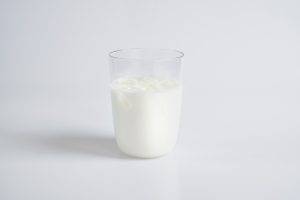Introduction:
It is incredibly frustrating when your toddler rejects their meal. But before you Resort to encouraging them to eat or bribe them with a reward let me explain different causes which may lead to your baby not accepting solids.
Baby is not ready for solid food
 Teething is another reason for sudden solid refusal which parents generally miss out on. The little ones who are teething, experience irritation and pain. You may find them drooling with/ without swollen gums, and cranky than usual. A tooth takes around two months to erupt but the discomfort phase continues from swelling of the gums till the teeth cut out of the gum. The discomfort directly affects their appetite. We advise various teething hacks like offering resistive food, gum massage, and gnawing cold food to relieve it.
Teething is another reason for sudden solid refusal which parents generally miss out on. The little ones who are teething, experience irritation and pain. You may find them drooling with/ without swollen gums, and cranky than usual. A tooth takes around two months to erupt but the discomfort phase continues from swelling of the gums till the teeth cut out of the gum. The discomfort directly affects their appetite. We advise various teething hacks like offering resistive food, gum massage, and gnawing cold food to relieve it.
Growth spurt
The baby’s growth rate varies from birth till they turn one year old. Initially, they double their birth weight by 4 to 6 months and then triple by they turn one year old. But the slow increase in their body weight and rather the reduction in the rate of growth is seen till they turn two years old. This phase may continue till the next growth spurt. So, it’s pretty normal for them to skip meals, eat less at mealtime, and demand snacks more often. So parents should concentrate on offering small nutrient-dense meals throughout the day.
Suffering from an Illness
 Kids who are about to fall sick or already sick generally have low appetites. They are keener on drinking milk or water more compared to solid food during this period. This is pretty normal. Even adults don’t feel like eating when they’re sick. So, it’s better to stay patient and take care of their hydration level and health.
Kids who are about to fall sick or already sick generally have low appetites. They are keener on drinking milk or water more compared to solid food during this period. This is pretty normal. Even adults don’t feel like eating when they’re sick. So, it’s better to stay patient and take care of their hydration level and health.
Taste of food
 Babies have mature sweet taste buds. This is very common as they stayed solely on the breast or formula milk till 6 months of their life. But as other taste buds are not matured, they reject certain food. Kids most often have an affinity towards juicy fruits and are disinterested in vegetables as they find them bitter. But repeated exposure over time leads to familiarity, thereby reducing the rejection.
Babies have mature sweet taste buds. This is very common as they stayed solely on the breast or formula milk till 6 months of their life. But as other taste buds are not matured, they reject certain food. Kids most often have an affinity towards juicy fruits and are disinterested in vegetables as they find them bitter. But repeated exposure over time leads to familiarity, thereby reducing the rejection.
Feeding skills
Babies learn slowly as they grow up and the learning phase continues throughout the toddler years. So, the earlier they are exposed to self-feeding skills, the more they learn with each exposure. Self-feeding skills go through various stages of touching, squishing, exploring, smelling, putting in mouth, chewing, and spitting out. This is part of their learning experience. Once they get confident about their skills, slowly the refusal to eat also minimizes.
Baby Sitting posture
 Eating solid food is a complicated procedure. A lot of things are associated with it. Good sitting position, erect posture, and support under the feed help you to stay stable enough to properly concentrate on the food. Babies need to work on sensory exploration as well as motor skills during the early days of solid eating. So, a stable comfortable sitting chair with strong back support as well as a footrest provides them the core stability to concentrate better on their practice sessions.
Eating solid food is a complicated procedure. A lot of things are associated with it. Good sitting position, erect posture, and support under the feed help you to stay stable enough to properly concentrate on the food. Babies need to work on sensory exploration as well as motor skills during the early days of solid eating. So, a stable comfortable sitting chair with strong back support as well as a footrest provides them the core stability to concentrate better on their practice sessions.
Hunger cues of your baby
Parents should keep in mind the baby’s hunger cues before offering food. This is one of the most common points caregivers miss out on. If a baby is not hungry their meal rejection is evident. So make sure the baby is hungry enough before offering food.
Force Feeding
 Force-feeding is a kind of pressure which parents to make children eat food. They are of different types. They might be trying to open their mouths forcefully, persuading them to eat the last bite, eating in exchange for a bribe or reward. In most cases, force-feeding is done without keeping in mind the kid’s hunger pattern. In cases of bribing, it affects kids’ psychology badly. In the first case, kids start fearing mealtime and associate food negatively with fear. In the latter case, they associate bribing with manipulation. Any kind of pressure that affect kid’s psychology negatively affects their appetite
Force-feeding is a kind of pressure which parents to make children eat food. They are of different types. They might be trying to open their mouths forcefully, persuading them to eat the last bite, eating in exchange for a bribe or reward. In most cases, force-feeding is done without keeping in mind the kid’s hunger pattern. In cases of bribing, it affects kids’ psychology badly. In the first case, kids start fearing mealtime and associate food negatively with fear. In the latter case, they associate bribing with manipulation. Any kind of pressure that affect kid’s psychology negatively affects their appetite
Physical activity
 A physically active child will have an improved appetite. But if a kid stays all day at home in a closed room busy playing video games, and watching screens. It is obvious their appetite will be low as their energy expenditure is minimum.
A physically active child will have an improved appetite. But if a kid stays all day at home in a closed room busy playing video games, and watching screens. It is obvious their appetite will be low as their energy expenditure is minimum.
Exhaustion
 Babies and toddlers get very tired post-evening. Dinner time is the hardest for them to concentrate on eating. So, some days they may skip dinner or demand milk. So parents should concentrate on offering them nutritious, high-calorie meals throughout the day. Start the day with a good breakfast rich in balanced nutrients followed by snacks twice a day. It may include fruits, roasted makhanas, and nuts as a source of healthy fats. Lunch should be good enough, and try to include curd and raw salads as a source of prebiotics and probiotics.
Babies and toddlers get very tired post-evening. Dinner time is the hardest for them to concentrate on eating. So, some days they may skip dinner or demand milk. So parents should concentrate on offering them nutritious, high-calorie meals throughout the day. Start the day with a good breakfast rich in balanced nutrients followed by snacks twice a day. It may include fruits, roasted makhanas, and nuts as a source of healthy fats. Lunch should be good enough, and try to include curd and raw salads as a source of prebiotics and probiotics.
Preference of puree food
Most parents start the solid weaning journey with pureed food which is the traditional way of feeding. But the problem arises when they don’t follow the texture timeline and continue to feed pureed food past nine months of age. The baby then starts preferring purees over textured food. They may even continue gagging on slight changes in texture. The discomfort due to sudden texture change induces fear in them and they want to stay stuck in pureed food. They continue rejecting the food if it is not per their comfortable taste and texture.
Immature chewing skills
Kids who are not exposed to textured and resistive food for the longest time suffer from immature oral motor skills. As they are either not or inconsistently being exposed to resistive food they suffer from poor chewing habits. They are reluctant to chew food, and even pocket or reject food after two or three bites.
Bland and the same food every day
 Kids get bored of the same flavor and texture of food offered every day. If no variety of food is offered throughout the week slowly they lose interest in the food and start rejecting it. So, parents should continue offering a variety of food. Even offering the same food in different ways like boiling, baking, steaming, and stir-frying leads to changes in taste and texture. It creates curiosity in kids to try the food. Elevating the aroma and taste of food with herbs and spices to make it interesting.
Kids get bored of the same flavor and texture of food offered every day. If no variety of food is offered throughout the week slowly they lose interest in the food and start rejecting it. So, parents should continue offering a variety of food. Even offering the same food in different ways like boiling, baking, steaming, and stir-frying leads to changes in taste and texture. It creates curiosity in kids to try the food. Elevating the aroma and taste of food with herbs and spices to make it interesting.
Distraction feeding
The main problem with distraction feeding is that we parents are the ones who introduce the distractions like watching cartoons, and music on TV or iPads, bringing up their favorite toys to the meal table, goofing around, singling, and clapping to make them sit in a place and eat. Later it goes out of control and eventually, they get bored of continuous stimulation and start rejecting meals. Distracting them and shoveling food in their mouth doesn’t work for the longest time. So, it’s better to let them invest in exploring the food items right from the beginning of a solid weaning journey to grow interested in food.
Loved for milk
 Some toddlers mostly between the age of 18 to 24 months stay persistent on either breast or bottle feed. Their stomach always stays filled with fluid, thereby leaving no room or opportunity for solid food. They are reluctant and stubborn to try out food with varying textures as they need to chew them. They suffer from nutritional deficiencies like iron, and zinc as milk is devoid of them. They even suffer from tooth decay, frequent ear infections, and malalignment of teeth due to bottle-feeding addiction post two years of age.
Some toddlers mostly between the age of 18 to 24 months stay persistent on either breast or bottle feed. Their stomach always stays filled with fluid, thereby leaving no room or opportunity for solid food. They are reluctant and stubborn to try out food with varying textures as they need to chew them. They suffer from nutritional deficiencies like iron, and zinc as milk is devoid of them. They even suffer from tooth decay, frequent ear infections, and malalignment of teeth due to bottle-feeding addiction post two years of age.
Improper spacing of meals
If proper gapping of time is not there in between two meals, a meal, and a snack, or a meal and a milk drink, it’s obvious kids will reject the meal. It is advised to keep a gap of at least 2 to 2.5 hours between meals and snacks for toddlers. As they grow up they can stay hungry for 3-4 hours.
Binging on junk food
 Most of the time parents/ caregivers wonder why kids chew on biscuits, cookies, pastries, bread, and cakes but reject homemade meals. Those are actually made up of refined flours and swelled up by chemical agents. They are not real resistive food. Hence they don’t need to put on much effort into chewing them. Moreover, they taste similar each time they eat. So, they get used to the taste. But this type of food is not a healthy option as they are rich in starch, giving instant energy to them. But continuing binge eating such junk for a long time can lead to obesity, hormonal imbalance, and diabetes.
Most of the time parents/ caregivers wonder why kids chew on biscuits, cookies, pastries, bread, and cakes but reject homemade meals. Those are actually made up of refined flours and swelled up by chemical agents. They are not real resistive food. Hence they don’t need to put on much effort into chewing them. Moreover, they taste similar each time they eat. So, they get used to the taste. But this type of food is not a healthy option as they are rich in starch, giving instant energy to them. But continuing binge eating such junk for a long time can lead to obesity, hormonal imbalance, and diabetes.
Kid’s behavior
Some kids are generally stubborn in nature. They go on a rejecting spree only to test the boundaries of parents and push them to the last limit. So, try to avoid power struggles with them, as it can lead to more rejection and tantrums thereby spoiling the meal time. Rather handle them with a friendly approach. Offer two to three options at the meal plate. Let them choose and eat at their convenience. End the meal at the point they’re not willing to try. Try again during the next meal. Offer the unsafe food in small amounts along with their safe food. So, that they don’t stay hungry. But encourage them to try unsafe food too. Slowly with age acceptance comes.
Fear of new food
 Every kid has that fear of trying out any new food. It is part of normal child development, “fear of the unknown’. It leads to instant refusal of food. So, the best way to cope with it is to expose them to it more often. Encourage them and break their fear cycle by showing them how to eat it. Kids generally think what parents are eating is safe food. So, sitting next to them and sharing the same food on an everyday basis helps them understand better that it is safe to try out.
Every kid has that fear of trying out any new food. It is part of normal child development, “fear of the unknown’. It leads to instant refusal of food. So, the best way to cope with it is to expose them to it more often. Encourage them and break their fear cycle by showing them how to eat it. Kids generally think what parents are eating is safe food. So, sitting next to them and sharing the same food on an everyday basis helps them understand better that it is safe to try out.

